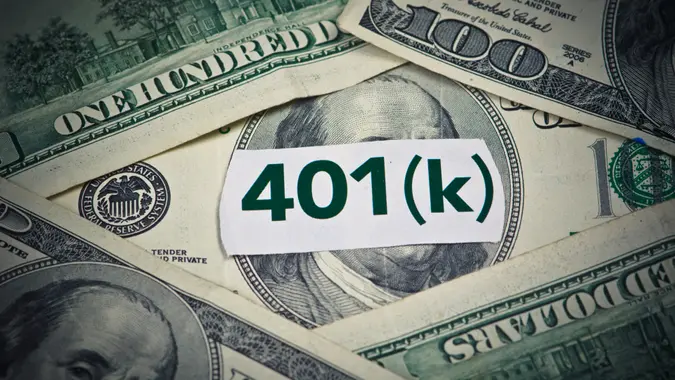Suze Orman: 2 Ways for Retirees To Manage Multiple IRAs

Commitment to Our Readers
GOBankingRates' editorial team is committed to bringing you unbiased reviews and information. We use data-driven methodologies to evaluate financial products and services - our reviews and ratings are not influenced by advertisers. You can read more about our editorial guidelines and our products and services review methodology.

20 Years
Helping You Live Richer

Reviewed
by Experts

Trusted by
Millions of Readers
Juggling multiple individual retirement accounts (IRAs) can get complicated.
“If you have multiple traditional IRAs, you are setting yourself up for some potential headaches once you reach the age where you must begin to take required minimum distributions (RMDs),” financial expert Suze Orman wrote in a recent blog post.
Depending on the year you were born, this age is either 73 or 75. If you’re currently retired, but haven’t reached the age when you are required to take distributions, take note of these strategies now to make managing your multiple IRAs simpler.
Consolidate Your Accounts
If you have multiple traditional IRAs, the best way to make managing them easier is to roll all of your accounts into one.
“You can move money from one traditional IRA into another traditional IRA without any tax bill,” Orman wrote. “It’s just a rollover. If you have multiple traditional IRAs at the same brokerage, call them and you might be able to consolidate all of them with just a phone call.
“If you have traditional IRAs at different brokerages, decide which one you want to keep, and then ask for rollover instructions from the brokerage you will move your money out of.”
The money should be transferred directly from one account to the other — otherwise, there may be tax implications.
Consolidating your accounts is the strategy Orman recommends if you currently have multiple IRAs.
“The less you have to keep track of as you age, the easier you are making it for an older you, and anyone who might eventually step in and help manage your finances,” she wrote. “One big traditional IRA account that simplifies your life to one RMD is a wise retirement move.”
Take Your Total Required Distributions From a Single Account
If you don’t want to consolidate your accounts, your other option to make things simpler is to take your total RMD amount from one account instead of having to take distributions from each.
“For instance, if you have four IRAs, calculate the RMD for all four. (Your brokerage will have a free online tool to help with this. It’s an easy calculation.),” Orman wrote. “Then, add up all four.”
The example Orman gives is that you have an IRA with an RMD of $2,000, an IRA with an RMD of $4,000, an IRA with an RMD of $2,500 and an IRA with an RMD of $3,500. That means in total, you must withdraw $12,000.
“If you want, you can take a $12,000 RMD from one of the IRAs,” Orman wrote. “All the IRS cares about is that you satisfy your total RMD obligation.”
This move allows you to be more strategic.
“This strategy can be helpful if you invest your IRAs a bit differently,” Orman wrote. “In years when stocks are down, you might want to avoid taking the RMD directly from an IRA heavily invested in stocks, and instead take it from an IRA with cash or bonds.”
 Written by
Written by  Edited by
Edited by 

























